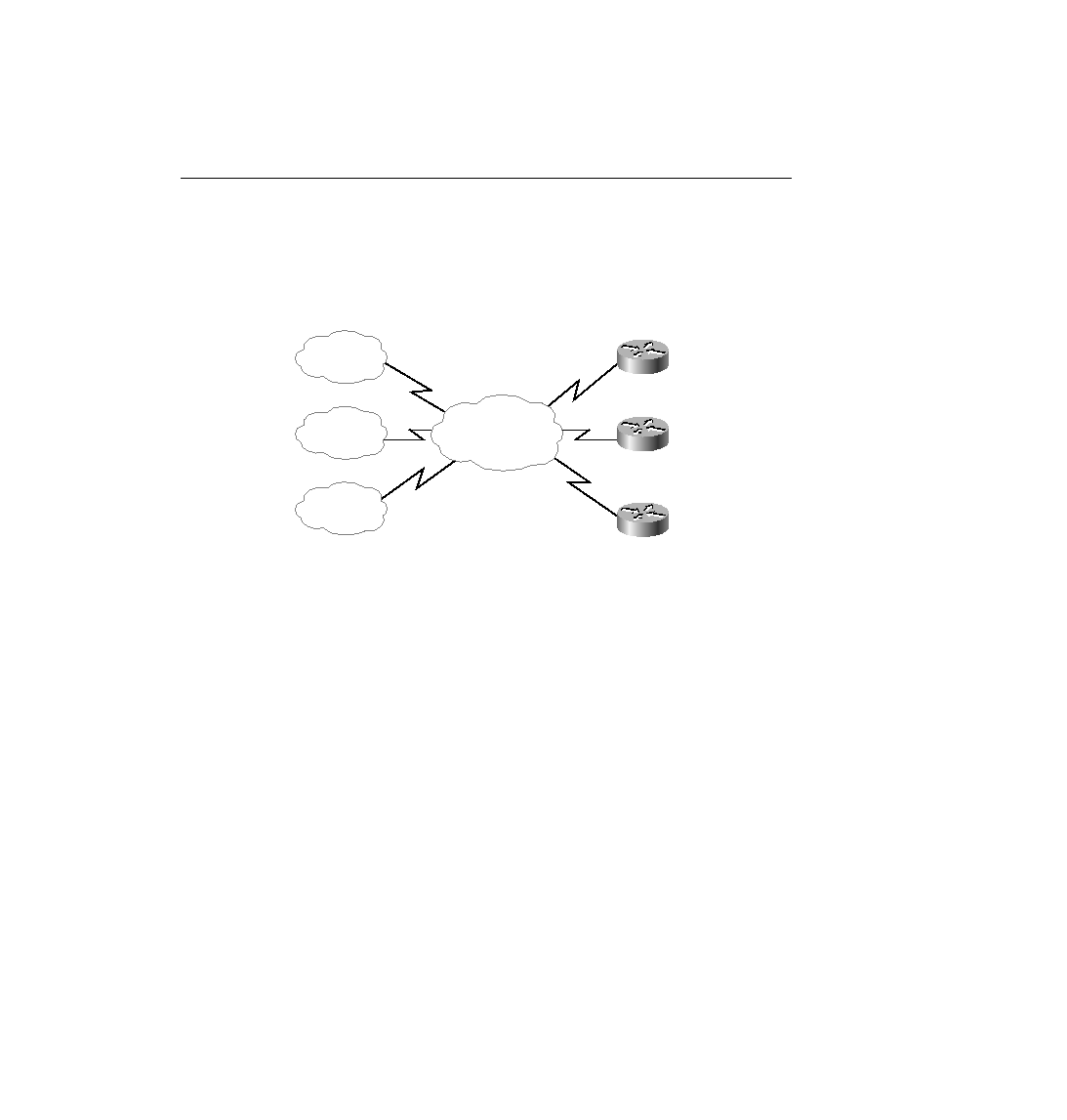
address begins with 198. More than 2 million Class C networks alone exist, but CIDR has
helped Internet routers reduce their routing tables to a more manageable size, in the range of
70,000 routes at the end of 1999.
"classless" view of the number can be attained. In other words, treat the grouping as a math
problem, ignoring the bourgeois Class A, B, and C rules. For instance, 198.0.0.0/8 (198.0.0.0,
mask 255.0.0.0) defines a set of addresses whose first 8 bits are equal. This route is advertised
by ISP #1 to the other ISPs, who need a route only to 198.0.0.0/8. In its routers, ISP #1 knows
which Class C networks are at which customer sites. This is how CIDR gives Internet routers a
much more scalable routing table, by reducing the number of entries in the tables.
4 address space. Imagine that Customer #1 and Customer #3 need 10 and 20 IP addresses--
ever. Each customer has only a router and a single Ethernet. Each customer could register its
own Class C network, but if both did so, it would not be in the range already registered to the
ISP.
198.x.x.x range. As a service, the ISP suggests to Customer #1 something like this: Use IP
subnet 198.8.3.16/28, with assignable addresses 198.8.17 to 198.8.30. To Customer #3, who
needs 20 addresses, ISP #1 suggests 198.8.3.32/27, with 30 assignable addresses (198.8.3.33 to
198.8.3.62). (Feel free to check the math with the IP addressing algorithms listed earlier.)
198.4.3.0/24